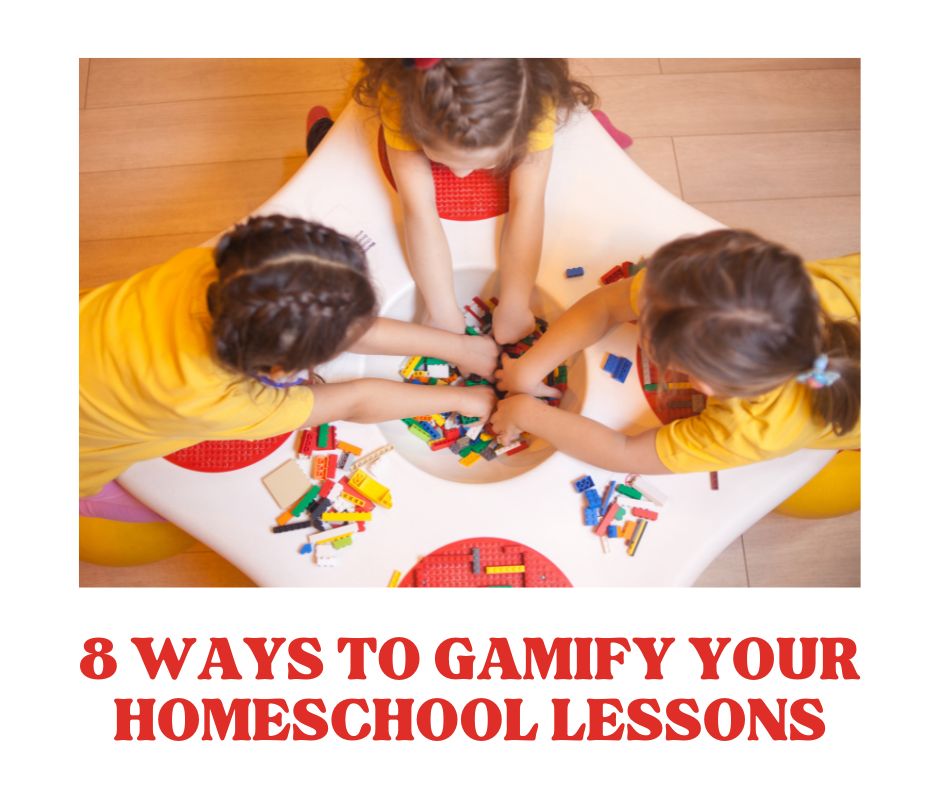If you’re homeschooling kids, especially those with limited attention with ADHD, you know it can be a struggle to keep them engaged—especially when it comes to subjects they find boring or overwhelming. The secret to boosting motivation and making learning fun? Gamify it! Turning lessons and daily tasks into games can transform your homeschool experience and help your kids thrive academically and emotionally.
In this post, we’ll show you easy and practical ways to turn any subject or chore into a fun and interactive game. Let’s dive in!
Why Gamify Your Homeschooling?
Gamifying your homeschool offers tons of benefits:
- Increased Engagement: Games naturally keep kids focused and interested, making learning feel less like a chore.
- Boosted Motivation: Kids are more likely to push through challenging subjects when there’s a reward or fun involved.
- Building Positive Habits: Consistent play-based learning helps develop a routine, making it easier for both parents and kids to stay on track.
1. Turn Lessons into Fun Challenges
One of the easiest ways to gamify homeschooling is to turn your lessons into mini challenges or competitions.
- Level-Up Lessons: Break down subjects like math or history into smaller levels or challenges. As your child completes tasks, they “level up” to harder questions. At the end of each level, reward them with something small, like a sticker or extra playtime.
- Timed Challenges: Add a timer to make tasks feel more urgent and exciting. For example, “Can you finish this set of math problems in 5 minutes?” or “How many pages can you read in 10 minutes?”
- Daily Learning Quests: Create a storyline for your subject. If you’re teaching geography, turn your child into an explorer who must solve different problems (like answering trivia questions) to “discover” a new land. The possibilities are endless!
2. Use a Reward System to Motivate Kids
Who doesn’t love a little reward? Incorporating rewards into your homeschool will keep your kids motivated and excited.
- Sticker Charts: Create a chart where kids earn stickers for completing tasks. Once they collect enough stickers, they can exchange them for a reward—anything from extra screen time to choosing a fun activity.
- Point System: For every completed task or lesson, kids can earn points. Points can be “spent” on rewards like a new book, a favorite snack, or even a fun outing. Let your kids help decide the rewards for extra buy-in.
Have older kids? See this post on how to create effective reward systems for teens with ADHD.
3. Integrate Technology with Fun Learning Apps
Use educational apps to make learning even more interactive. These apps gamify learning with rewards, levels, and interactive exercises.
- Educational Games: Websites and apps like Kahoot!, ABCmouse, and Khan Academy Kids have fun quizzes and challenges on subjects ranging from math to science. Let your child play while they’re learning!
- Digital Badges: Look for programs that give kids digital badges for completing lessons. These badges give your child a sense of achievement and progress as they work through the material.
4. Create Learning Treasure Hunts
Kids love treasure hunts—and you can easily turn them into learning activities!
- Scavenger Hunts: Hide objects or cards related to the subject you’re teaching around the house or yard. For example, in a history lesson, hide pictures of historical figures and have your child identify them when they find them.
- Puzzle Hunts: Create a treasure map or a series of puzzles your child has to solve to “unlock” the next part of the learning journey. Each task completed leads them closer to their goal!
5. Gamify Household Chores
Not all games need to be school-related! Turning daily tasks into games can make household chores feel more like fun activities rather than dreaded responsibilities.
- Chore Races: Challenge your child to a race to see who can clean up their room or finish a chore faster. Use a timer to keep it competitive, or have a “chore-off” where you both work on tasks at the same time.
- Chore Cards: Create a deck of chore cards with pictures and short descriptions of tasks. Kids can draw cards and “win” the task they complete. Assign point values to make things even more competitive!
6. Celebrate Achievements with Rewards
Gamification isn’t complete without celebrating wins. Recognition keeps your kids motivated and reminds them that their hard work pays off.
- Victory Board: Set up a bulletin board where your child can add “wins” or stickers each time they complete a task or level. At the end of the week, reward them with a small prize or activity of their choice.
- Family Victory Dance: Celebrate big learning milestones with a family dance or song. This adds a playful touch to learning achievements and makes your homeschool routine feel more celebratory.
7. Collaborate with Team Learning Games
Teamwork makes the dream work! If you have multiple kids, turn learning into a group activity where everyone collaborates to achieve a shared goal.
- Team Tasks: Divide your children into teams and have them work together to solve problems or complete assignments. If there’s a competitive element, they’ll be motivated to help each other out.
- Learning Trivia Night: Turn a family dinner into a trivia night! Prepare questions based on what everyone has been learning. Kids can earn points for each correct answer, and the winner gets a special treat.
8. Use Physical Movement to Make Learning Active
Learning doesn’t have to be confined to a desk! Add physical activity to lessons to keep kids engaged.
- Learning and Movement: Let your child jump on a trampoline while reading or race across the room while answering trivia questions. You can even make up dances related to the lesson content, like a history-based dance or math problem-solving moves.
- Break Time Games: Short and active games can help break up the day. After completing a lesson, take a 10-minute break to do something fun like a dance-off, scavenger hunt, or a quick round of hide-and-seek.
How to Make Gamifying Work in Your Homeschool
To make gamification work, try these simple tips:
- Keep it simple: You don’t need fancy technology or expensive tools—use what you already have around the house.
- Be consistent: Make games part of your everyday homeschool routine so your child gets used to the fun atmosphere.
- Mix things up: Introduce new games regularly to keep learning exciting and fresh.
- Celebrate progress: Don’t forget to recognize your child’s achievements, whether big or small. Positive reinforcement goes a long way.
Let Learning Be Fun Again!
Gamifying your homeschool is an amazing way to make learning enjoyable and engaging. By turning everyday lessons and tasks into fun, interactive games, you’ll boost motivation, build good habits, and help your kids get excited about their education. Whether it’s using challenges, rewards, or interactive apps, there’s no shortage of ways to turn your homeschool into an adventure!
Ready to make learning a game? Start with a few simple ideas from this post and watch your kids light up with excitement as they learn. Happy gamifying!







0 Comments